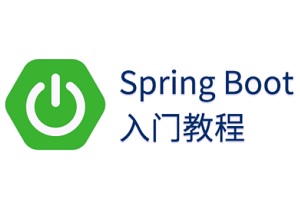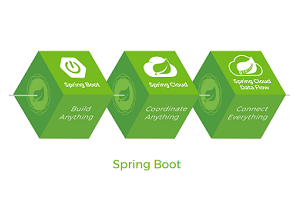《iOS 6高级开发手册(第4版)》——1.9节秘诀:基于加速计的滚动视图
本节书摘来自异步社区《iOS 6高级开发手册(第4版)》一书中的第1章,第1.9节秘诀:基于加速计的滚动视图,作者 【美】Erica Sadun,更多章节内容可以访问云栖社区“异步社区”公众号查看
1.9 秘诀:基于加速计的滚动视图
iOS 6高级开发手册(第4版)
好几位读者要求我在本书这一版中包括进一个倾斜滚轮秘诀。倾斜滚轮使用设备的内置加速计来控制在UIScrollView的内容周围的移动。当用户调整设备时,材料会相应地“下落”。它不会把视图定位在屏幕上,而是把内容视图滚动到一个新的偏移位置。
创建这个界面的挑战在于:确定设备在什么地方应该具有它的静止轴(resting axis)。大多数人最初建议当显示屏靠着它的背部时应该是稳定的,并且z轴方向笔直地指向上方。事实证明:这实际上是一种相当糟糕的设计选择。要使用那根轴,就意味着在导航期间屏幕必须实际地偏离观看者。随着设备旋转离开视图,用户将不能完全看到屏幕上所发生的事情,尤其是在固定的位置使用设备时,站在高处查看设备有时也会产生这种效果。
作为替代,秘诀1-5假定稳定的位置是通过z轴指向大约45°的方向,即用户把iPhone或iPad握在手中的自然位置,这处于正面朝上和正面朝前方的中间位置。对秘诀1-5中的数学运算做了相应的调整。从这个歪斜的位置来回倾斜,使屏幕在调整期间保持最大的可见性。
与秘诀1-4相比,这个秘诀中的另一处改变是低得多的加速常量。这使屏幕上的运动能够更慢地发生,让用户更容易降低速度并恢复导航。
秘诀1-5 倾斜滚轮
- (void)accelerometer:(UIAccelerometer *)accelerometer
didAccelerate:(UIAcceleration *)acceleration
{
// extract the acceleration components
float xx = -acceleration.x;
float yy = (acceleration.z + 0.5f) * 2.0f; // between face-up and face-forward
// Has the direction changed?
float accelDirX = SIGN(xvelocity) * -1.0f;
float newDirX = SIGN(xx);
float accelDirY = SIGN(yvelocity) * -1.0f;
float newDirY = SIGN(yy);
// Accelerate. To increase viscosity lower the additive value
if (accelDirX == newDirX) xaccel = (abs(xaccel) + 0.005f) * SIGN(xaccel);
if (accelDirY == newDirY) yaccel = (abs(yaccel) + 0.005f) * SIGN(yaccel);
// Apply acceleration changes to the current velocity
xvelocity = -xaccel * xx;
yvelocity = -yaccel * yy;
}
- (void) tick
{
xoff += xvelocity;
xoff = MIN(xoff, 1.0f);
xoff = MAX(xoff, 0.0f);
yoff += yvelocity;
yoff = MIN(yoff, 1.0f);
yoff = MAX(yoff, 0.0f);
// update the content offset based on the current velocities
CGFloat xsize = sv.contentSize.width - sv.frame.size.width;
CGFloat ysize = sv.contentSize.height - sv.frame.size.height;
sv.contentOffset = CGPointMake(xoff * xsize, yoff * ysize);
}
- (void) viewDidAppear:(BOOL)animated
{
NSString *map = @"http://maps.weather.com/images/\
maps/current/curwx_720x486.jpg";
NSOperationQueue *queue = [[NSOperationQueue alloc] init];
[queue addOperationWithBlock:
^{
// Load the weather data
NSURL *weatherURL = [NSURL URLWithString:map];
NSData *imageData = [NSData dataWithContentsOfURL:weatherURL];
// Update the image on the main thread using the main queue
[[NSOperationQueue mainQueue] addOperationWithBlock:^{
UIImage *weatherImage = [UIImage imageWithData:imageData];
UIImageView *imageView =
[[UIImageView alloc] initWithImage:weatherImage];
CGSize initSize = weatherImage.size;
CGSize destSize = weatherImage.size;
// Ensure that the content size is significantly bigger
// than the screen can show at once
while ((destSize.width < (self.view.frame.size.width * 4)) ||
(destSize.height < (self.view.frame.size.height * 4)))
{
destSize.width += initSize.width;
destSize.height += initSize.height;
}
imageView.userInteractionEnabled = NO;
imageView.frame = (CGRect){.size = destSize};
sv.contentSize = destSize;
[sv addSubview:imageView];
// Activate the accelerometer
[[UIAccelerometer sharedAccelerometer] setDelegate:self];
// Start the physics timer
[NSTimer scheduledTimerWithTimeInterval: 0.03f
target: self selector: @selector(tick)
userInfo: nil repeats: YES];
}];
}];
}获取这个秘诀的代码
要查找这个秘诀的完整示例项目,可以浏览https://github.com/erica/iOS-6-Advanced-Cookbook,并进入第1章的文件夹。
 关注公众号
关注公众号
低调大师中文资讯倾力打造互联网数据资讯、行业资源、电子商务、移动互联网、网络营销平台。
持续更新报道IT业界、互联网、市场资讯、驱动更新,是最及时权威的产业资讯及硬件资讯报道平台。
转载内容版权归作者及来源网站所有,本站原创内容转载请注明来源。
-
上一篇

《Android 应用测试指南》——第2章,第2.8节其他命令行选择
本节书摘来自异步社区《Android 应用测试指南》一书中的第2章,第2.8节其他命令行选择,作者 【阿根廷】Diego Torres Milano(迭戈 D.),更多章节内容可以访问云栖社区“异步社区”公众号查看 2.8 其他命令行选择之前已经提到了,am instrument命令中接收输入<名称,值>的键值对,含义如表2.11中所示。 表2.11 am instrument命令的其他选项
-
下一篇

《OpenGL ES 3.x游戏开发(上卷)》一1.4 已有Android项目的导入和运行
本节书摘来异步社区《OpenGL ES 3.x游戏开发(上卷)》一书中的第1章,第1.4节,作者: 吴亚峰 责编: 张涛,更多章节内容可以访问云栖社区“异步社区”公众号查看。 1.4 已有Android项目的导入和运行 上一节介绍了如何搭建Android开发环境、如何开发Hello Android应用程序以及如何调试Android的应用程序,接下来在本节中将简要介绍已有Android项目的导入和运行。 1.4.1 项目的导入 首先介绍怎样将已有的Android项目导入Eclipse,此处以本书最后部分大案例中的“3D可爱抓娃娃”为例进行讲解,具体步骤如下。 (1)启动Eclipse,依次单击“File|Import”,系统将弹出导入项目的窗口Import,选择Android/Existing Android Code Into Workspace,然后单击“Next”按钮进入下一界面,如图1-64所示。 (2)在项目导入对话框中首先单击右上侧的“Browse...”按钮,如图1-65所示,找到工作区“D: Androidworkspace”,系统将工作区中的所有项目导入到“Projec...
相关文章
文章评论
共有0条评论来说两句吧...









 微信收款码
微信收款码 支付宝收款码
支付宝收款码